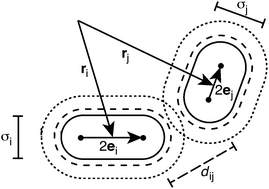For optimal application, pressure-sensitive adhesives must have rheological properties in between those of a viscoplastic solid and those of a viscoelastic liquid. Such adhesives can be produced by emulsion polymerisation, resulting in latex particles which are dispersed in water and contain long-chain acrylic polymers. When the emulsion is dried, the latex particles coalesce and an adhesive film is formed. The rheological properties of the dried samples are believed to be dominated by the interface regions between the original latex particles, but the relationship between rheology and latex particle properties is poorly understood. In this paper we show that it is possible to describe the bulk rheology of a pressure-sensitive adhesive by means of a mesoscale simulation model. To reach experimental time and length scales, each latex particle is represented by just one simulated particle. The model is subjected to oscillatory shear flow and extensional flow. Simple order of magnitude estimates of the model parameters already lead to semi-quantitative agreement with experimental results. We show that inclusion of transient forces in the model, i.e. forces with memory of previous configurations, is essential to correctly predict the linear and nonlinear properties.

You have access to this article
 Please wait while we load your content...
Something went wrong. Try again?
Please wait while we load your content...
Something went wrong. Try again?


 Please wait while we load your content...
Please wait while we load your content...